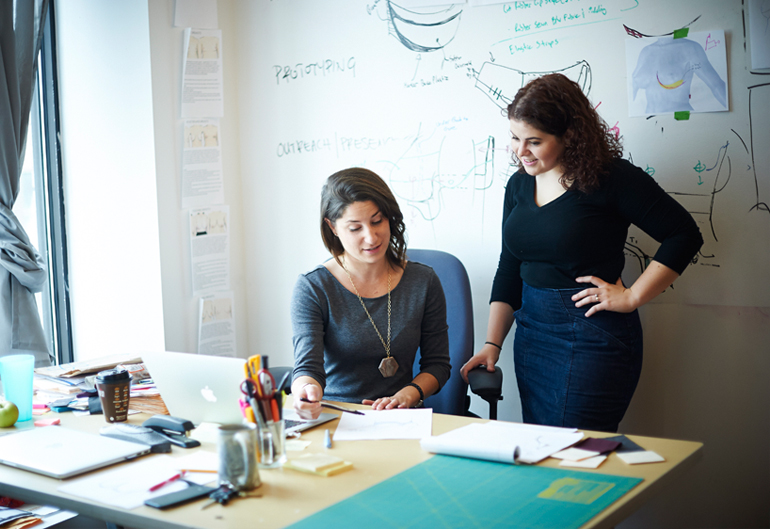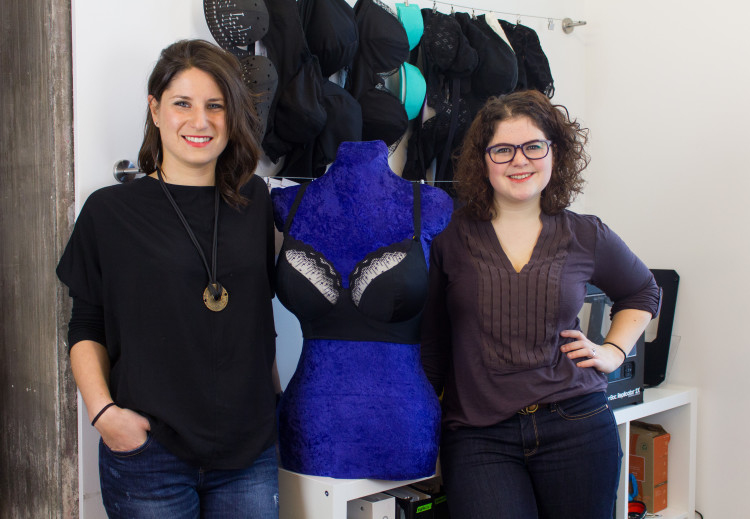Borrowing engineering principles from the architectural world has seen two graduates reimagine the bra.
Smart-alecky kids will sometimes dispense the advice to “build a bridge and get over it” when a problem comes up. Two smart young women from Pittsburgh, troubled by a century-plus of what they identified as problematic bra design, didn’t quite build a bridge.
But they did borrow from bridge engineering concepts when trying to improve bras: a literal pain for large-chested women the world over.
“All bras are made pretty much the same; they all have an underwire,” said Sophia Berman, CEO and co-founder of Trusst.
The cursed underwire pokes and pinches the sides, with bra straps pulling at the shoulders. Problems, on the whole, are getting worse. According to Berman, the traditional “containment method” will cause increased suffering for modern women, with the average bra up three sizes in the past two decades.
“As the average size of a woman is increasing, the average clothing size is getting bigger,” she added.
Support structures

The solution for Berman and co-founder (and fellow industrial designer) Laura West was bridge-inspired truss structures in bras, distributing a claimed 80 per cent of the bosom’s weight to the body’s core, rather than to the shoulders and neck.
A truss “takes a flat plane, like a bracket, and redirects the load,” explained West, the company’s chief product officer.
The idea came about following a Pittsburgh-Chicago Skype conversation, which swung around to the topic of how “bras suck”, in 2014. By their count, around 300 prototypes were examined, all based on the architecturally-inspired concept.
“We realised that a lot of [the problem] was directly where the underbust connects to the body; there is the place where we actually put some sort of support in,” West said.
“We started with the basics. We first made something that almost looks like body armour … We [then] did some bra testing on women. We got a lot of feedback saying they didn’t really want to wear body armour.”
Much subtraction followed in following iterations, taking away as much of the 3D printed insert material without sacrificing support from the cups.
Berman and West were successful in gaining a different type of support through the Alpha Lab Gear hardware accelerator, including time at a local TechShop chapter. Here they got access to tools such as an industrial sewing machine, vacuum forming equipment and 3D printers.
The hitherto untried approach meant a lot of figuring things out on-the-run.
Concepts were tested out by “hundreds” of women of different builds in the Pittsburgh area during the period.
The cycle of tweaking CAD designs in SolidWorks during the day and testing the resulting iterations out via a MakerBot FDM machine running overnight was repeated as many times as was necessary. (The eventual design has a patent pending, and the duo decline to give exact details about how it works.)
This was followed by a popular, humorous ‘Melon Men’ video and market validation of their idea through a Kickstarter campaign that concluded in May 2015.
Set a goal of US$25,000, the campaign reached US$78,889. An initial production run took place in December 2015. Pre-orders were dispatched in the northern hemisphere spring last year.
Bridging the gap
Berman said the ratio of males to females for their course at Carnegie Mellon University is about 60/40 now. When she was studying there it was “70/30 or 65/35”.
The lingerie enterprise founders were a rarity as females at their hardware and robotics accelerator.
Things also appear to be badly unbalanced for females when it comes to attracting venture capital, according to the Female Founders Fund.
Released last January, the group’s report for 2015 found that of 204 Bay Area Series A rounds (of a total of 663 in the US), only 8 per cent of these companies had a female CEO at the helm.

Noting the disparities above, Berman and West both hope to use their success story to encourage girls to: one, pursue STEM disciplines; and two, turn their talents to the business world.
Besides the possibilities with other innovations at Trusst (sports and therapeutic underwear are possibilities), both want to use their talents to help bridge the gender gap through mentorship.
“Around seventh grade is when girls really decide that they don’t like maths,” offered Berman, who says more needs to be done to let girls know gender has no role in the ability to pursue and excel in subjects like mathematics.
“I think to go along with that, having strong role models and strong mentors [helps] as you’re growing up, getting some of the women who are in the STEM community to really mentor younger women and help them grow.”







